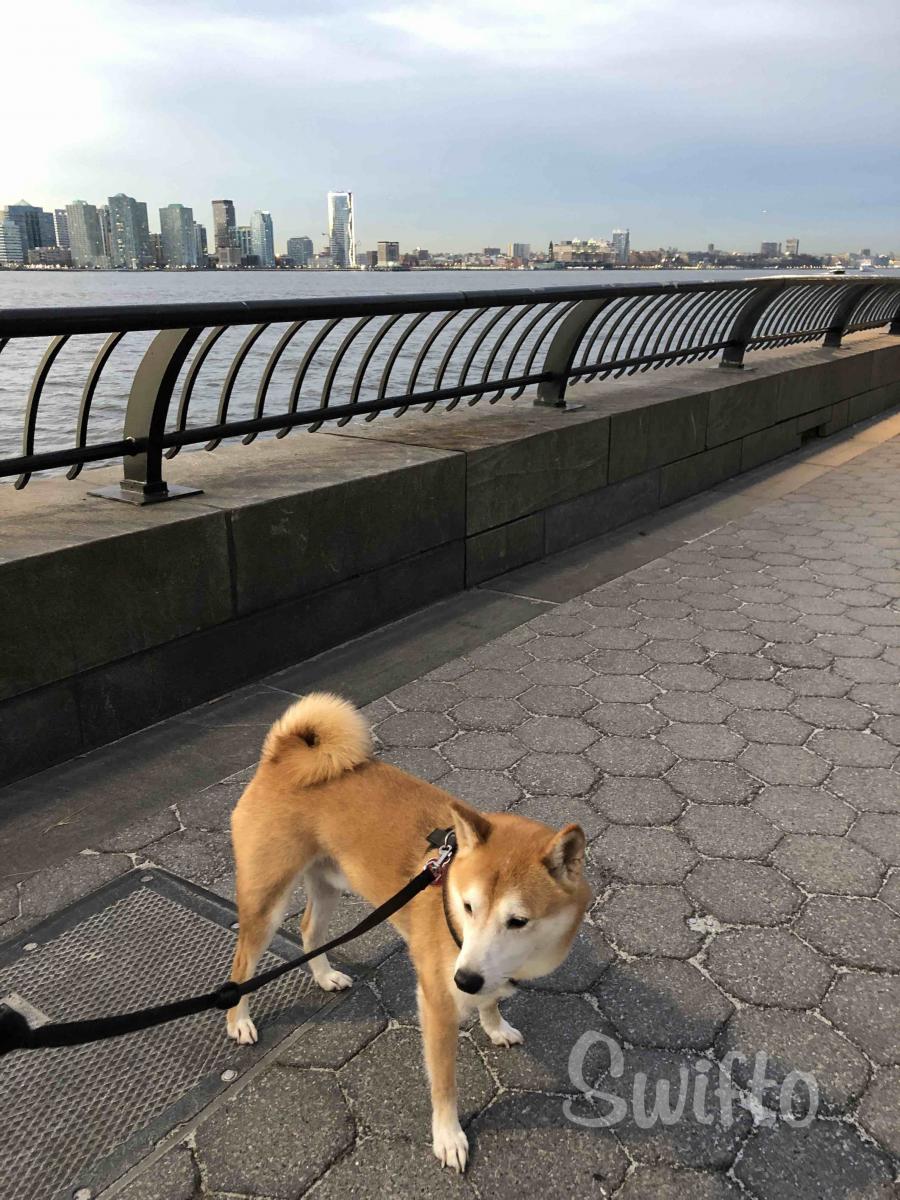Before you get your dog running:
Ask your doctor and your furry pal’s veterinarian about any health concerns before you and your dog go running. Also, don’t run with puppies until they’re 1.5 years or older. Their bones and joints will still be developing and running can hinder healthy bone and joint development. Also, never run with a frayed or cracked leash. Lastly, make sure you and your dog wear bright clothes or other accessories so you remain highly visible to cars.
Dogs who’ll love running:
Shepherds, Collies and Spaniels make great dog running partners because they’re genetically predisposed to lead active lives and enjoy accomplishing goals with their owners. Be sure to either cut their fur or keep them hydrated if you run with them on hot days. That goes for any long haired dog and double for Huskies and German Shepherds-- their beautiful coats are really thick and trap a lot of heat (like running in a sweatsuit you can’t take off). Also, be sure your companion is very obedient. These breeds are notorious for running in circles or shooting off in an unplanned direction. I’d also keep a slow to medium pace and not go more than four or five miles.
Pitbulls, Rhodesian ridgebacks, Dalmatians, Doberman Pinschers and Boxers are ideal physical specimens for running. They were all bred to be working dogs, typically benefit from keeping their hindquarters conditioned, and can usually run 15 to 20 miles per day (for all the marathon runners out there itching for buddies). It’s best to only run an individual from these breeds if they’re calm around other dogs and in crowds. Also, Dalmatians have a tendency to be deaf or loose hearing, so make sure you communicate well with your dog if that’s the case. Not hearing traffic is dangerous for man and canine alike. Lastly, Doberman’s can suffer from hip dysplasia and other joint diseases as they get older. Keep an eye on them in later years if their gait changes or endurance drops dramatically.
Jack Russell Terriers, Fox Terriers, Toy poodles, and most small breeds make great dog running partners. Don’t be fooled by their small size, they’re tough and have oodles of energy! It should also be noted that Dachshunds, Pugs, and any other breed prone to hip and joint issues should only go on few runs and not run for a prolonged period of time if they’re older.
Safety tips for you and your dog’s running:
- Run against the direction of traffic. It’s intimidating at first but it’s best to see exactly how drivers are handling themselves without straining your neck. While we’re at it - it’s not a good idea to wear headphones, either.
- Both you and your dog should have identification. The dog’s ID should ideally be on their collar. My mind is at ease when I have a photocopy of my dog’s info with my information as well. It never hurts to be prepared.
- Bring multiple poop bags and plenty of water. Almost goes without saying, right?
- Start with short runs and then gradually increase distances. Your knees and your pup will thank you.
- Warm ups and cool downs are important for running with dogs. Both you and your dog benefit from easing your hearts in and out of intense exercise. I also recommend a quick check on their paw pads every ten to fifteen minutes, even if your dog is a seasoned pro.
- If your dog is drooling and panting, if their gait becomes strange, or if they just seem to be into a particular fire hydrant, let them stop and relax. This run should be about both of you having a great time and exploring the world around you.
- Stop using a harness unless it’s designed to prevent pulling. They’re not a doggy shoulder’s best friend. Also, let your dog adjust to walking in a Haltis or Gentle Leader before you get your dog running. The best option is to use a simple neck collar and keep your dog at a constant heel. Their shoulders or head should be at hip level. Keep the dog’s collar high on their neck, right under the chin and behind their ears. When the collar slips to the lower, stronger area of her neck that gives your dog more control.
- No extendable leashes for dog running. Go for a 6 foot leather or nylon leash and keep it slack. A tight leash encourages a dog to pull and makes my favorite form of correction while walking (two quick tugs on the leash) much less effective.
If you follow these tips you won’t be able to stop your dog from running. I’m a firm believer that running helps humans and animals build confidence and handle obstacles with a cool head. Just don’t blame Swifto if your dog starts signing you both up for marathons!


